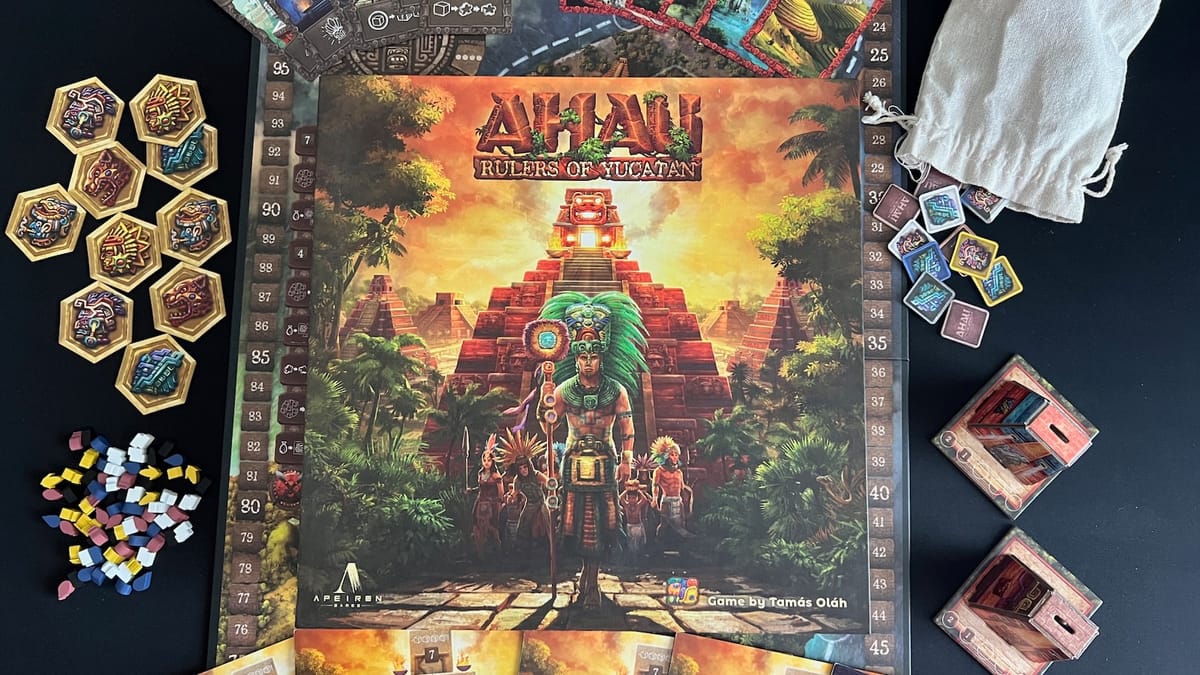
Around 250 A.D, The Maya civilization was building cities in the jungles of the Yucatan peninsula. Mayan families warred for control over the riches and the resources found throughout the land, invoking the power of the Gods to help them become the most powerful family in the land. In Ahau: Rulers of Yucatan, players take on the role of one of these families as they compete to be named the greatest K’uhul Ahau, leader, in the land.
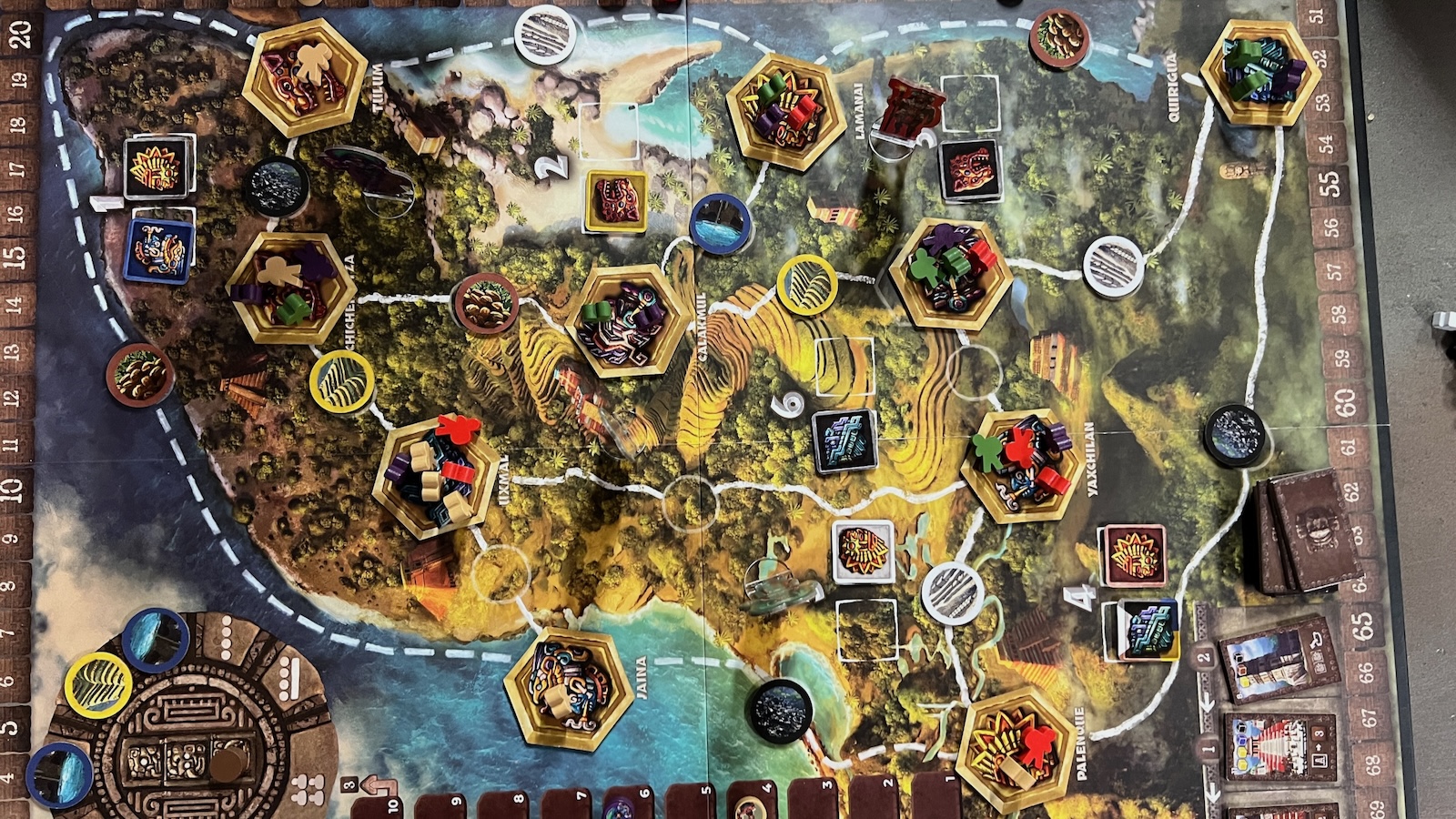
Ahau is a game for 1-5 players set in the Yucatan peninsula in what is now present day Mexico. Ahau was designed by Tamas Olah and published by Apeiron Games and Grand Gamers Guild. Players work through rounds of actions until three K’atun celebrations are held or one player can build up their pyramid or worker strength. Players will collect resources, build pyramids, and fight for control of the land. The player with the most fame, victory points, wins the game!
The game comes with two boards determined by the number of players. Tiles are placed around the board indicating cities that represent different Gods and circle tiles representing different resources. Each zone on the board is populated with colored tiles with representations of the Gods on different colored backgrounds corresponding to the different game resources. Five pyramids corresponding to the five Gods in the game are set up with random markers that indicate different interim scoring conditions. Players will start with a deck of six cards numbered one through six and will choose a starting tile and a player aid with starting resources.
GAMEPLAY
Each round, gameplay alternates between two phases: Movement and Action Phase.
Movement Phase
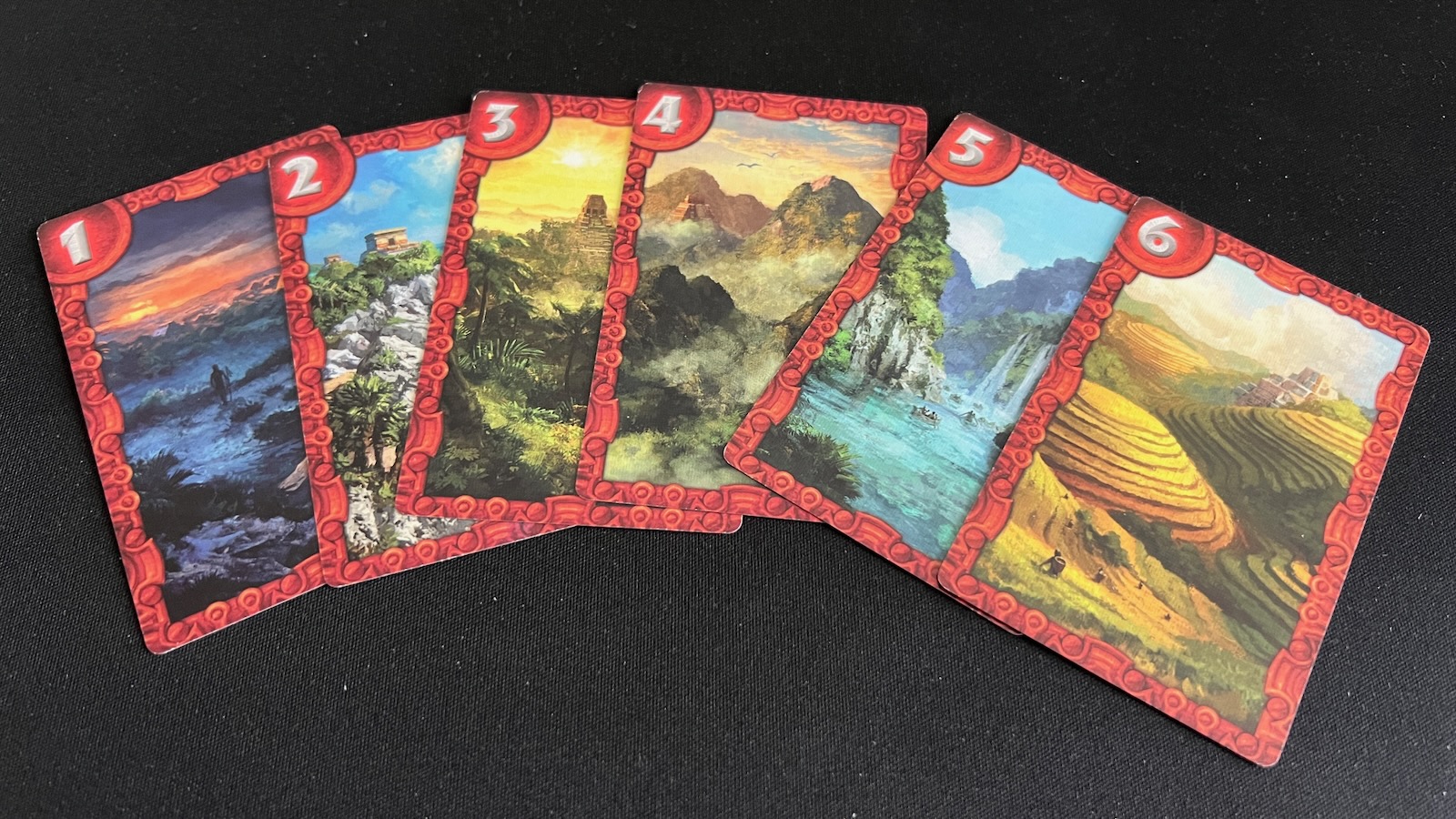
Players will place two cards face down on either side of their player board at the beginning of the phase. The card to the left will indicate the area they would like to move their ruler for the round. The card on the right indicates the strength of their military. Players will simultaneously reveal their cards and move their rulers to the indicated zone. If two or more players land in the same zone, a conflict will be resolved based on the military power. Military power is decided by adding the value on the played card and the weapon strength indicated on the player board. The winner will get to move up the Might Track which will give the player some bonuses. The loser will move their ruler to an unoccupied area and gain a weapon to use for any future battles. Before moving to the next phase, players will take one of the two pyramid tiles from their region of the board.
Action Phase

Starting with the lowest numbered region and working around the table, players will take a number of actions. Players start by placing a worker in one of the cities surrounding the region. Players may then invoke the patron God of the city they placed their worker in. Players will count the number of matching God tiles in their pyramid and discard any tiles they would like to determine their action strength. The colors of these tiles will also influence the powers of the Gods.
The Gods
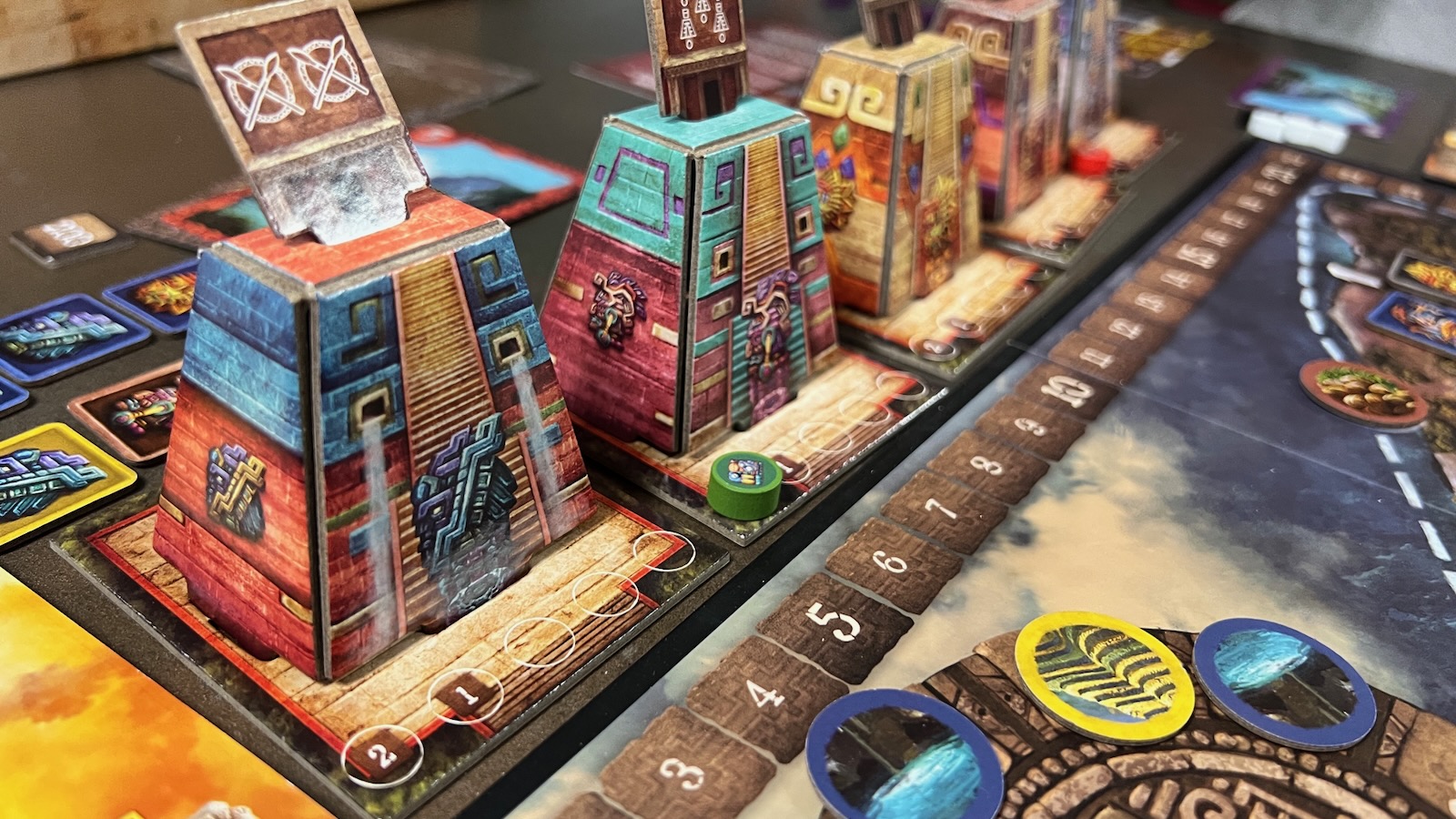
- Chief God: allows players to take pyramid tiles from the board or the bag
- Rain God: allows players to get more resources.
- God of Trade: allows players to move workers around the map and exchange resources.
- Sun God: allows players to regain laid down cards from movement phase and strengthen workers in cities.
- Jaguar God of the Underworld: allows players to remove workers from the board to gain fame and advance on the Might Track.
If a player uses a tile to summon the God that is in their pyramid, they may place one of their markers on the pyramid shrines to the God matching the action. The first and second player to do this each K’atun will get fame points. After summoning, the player may produce resources or build.
Building

Players may spend resources to build a pyramid tile into their pyramid. Players will get an adjacency bonus by placing tiles with matching God symbols and/or colors next to each other. Each pyramid tile must use a resource matching the background color and each level must be supported by tiles below and is more expensive than the previous row. Players may also spend resources to buy a building tile. These tiles often alter how different actions take place or give points when taking specific actions. If a special action is covered by a tile, then a player instantly carries it out. One of these special actions is gaining a special role card that will be added to the player deck for the Movement round and grants the players special actions when played.
Produce

If a resource disc is available next to the city the worker was placed in this round, the player may produce that chosen resource. The player will count the number of their color’s workers in the adjacent cities and take that many resource tokens from the supply. The resource disc from the board is then placed on the Calendar track. When the Calendar track is full at the end of a round, it will trigger a K’atun celebration scoring round.
At the end of the round, players will discard their played cards and will only draw up if they end their turn with less than two cards in their hand. All empty pyramid spaces on the board are randomly refilled from a draw bag.
K’atun Celebration
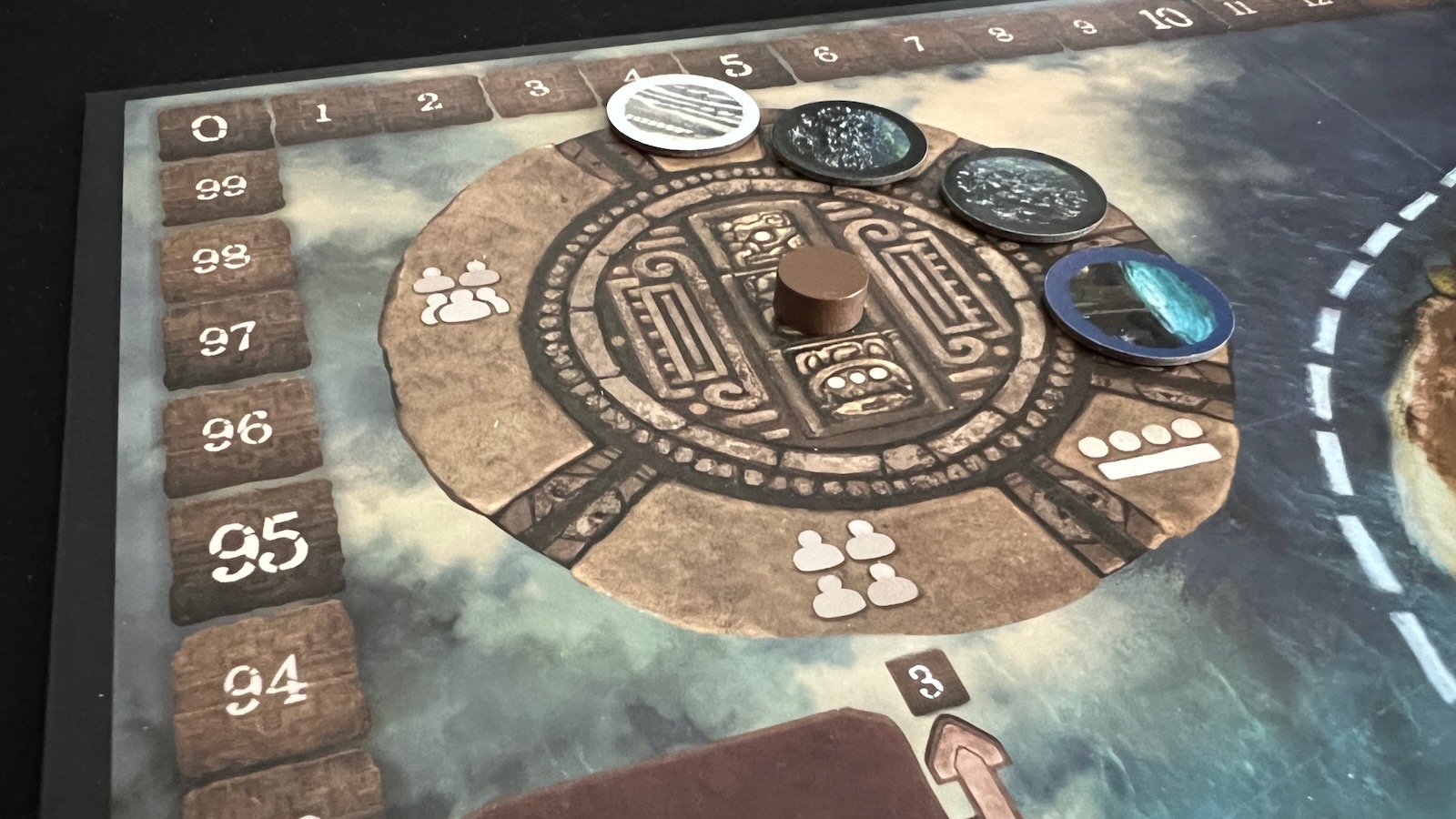
A K’atun was a period of 20 years in the Mayan civilization and serves as an intermittent scoring phase. The players will first score the temple pyramids. Each pyramid grants fame points to the players who have a disc there based on the player who earned the highest value based on the scoring condition. A choice for the game is the “Personal Scoring Variant” where players will base their score off of their personal statistics, and not the top player. Next, players will earn fame points if they have the majority of workers in each of the cities with tied players splitting points. At the end of the first two K’atun celebrations, players will retrieve their markers from the temples and reset the production tiles back on the board. Play then resumes.
The game ends when one of three conditions is met:
- The third K’atun celebration is held
- A player completes their pyramid. Players finish the round, the last K’atun celebration immediately triggers and the game ends.
- A player places their last worker on the board and carries out the end of game as listed above.
The player with the most fame points wins.
Modes and Variants
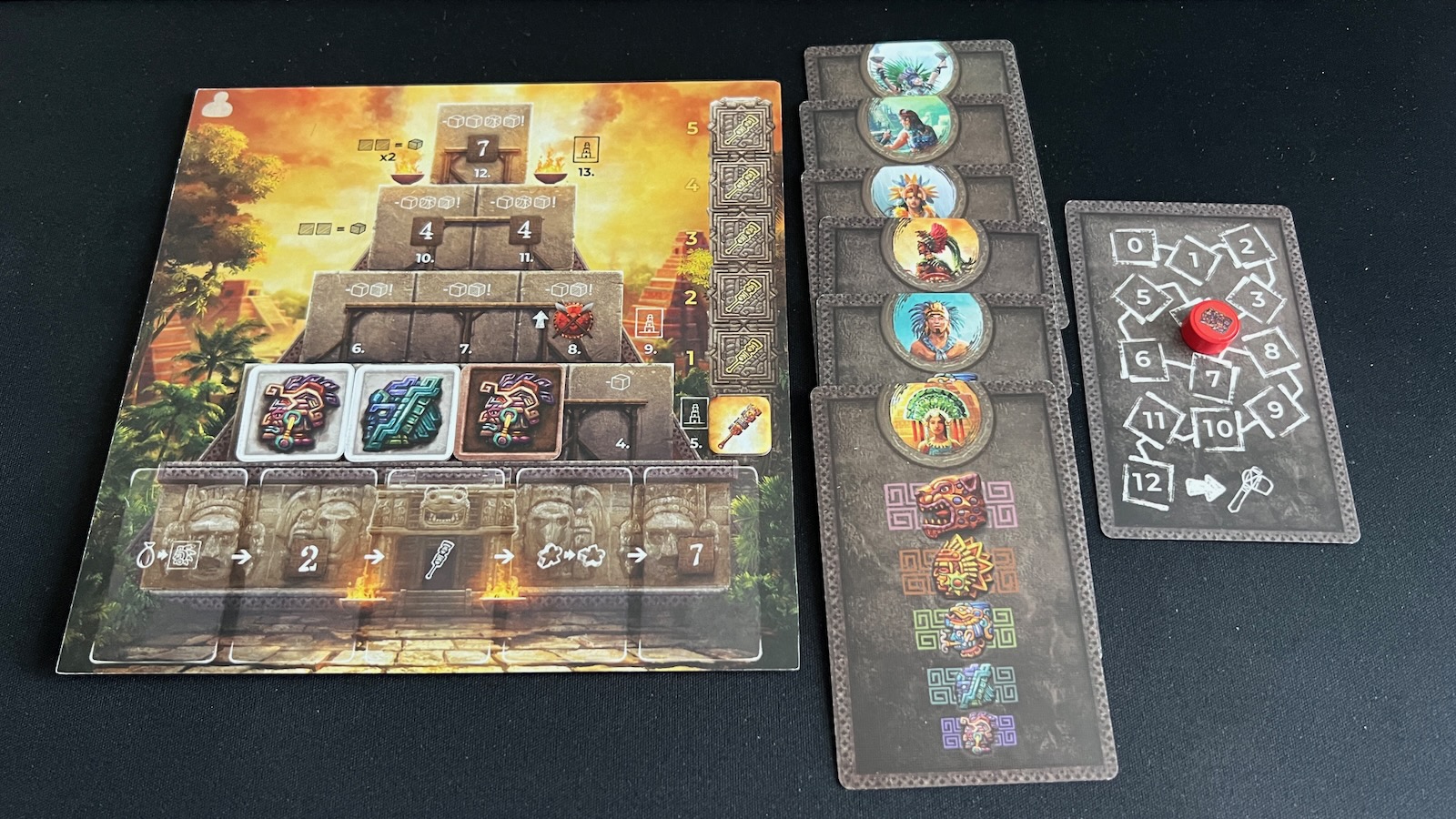
Apart from the personal scoring variant listed above, there are a number of different ways to play Ahau.
Dark Player Board
The opposite side of the player board adds a night scene and changes the rewards when placing tiles on the pyramid or the building track. The building track is focused on the Might Track, with the pyramid adding more role card slots to make it more available throughout the game.
Family Mode
For a lighter version of the game, the creators included rules for a family friendly game. This game excludes rules such as player roles, discarding pyramid tiles to summon Gods, and eliminates building tiles all together. When summoning Gods, players will only use pyramid tiles already built in their pyramids and simplifies the Gods’ powers.
Shadow Player Mode
This mode adds a shadow player to any 2, 3, or 4 player game. The shadow player is dealt a personality card from the solo-mode components and acts much like another player. Each round, they will randomly reveal a region to enter and will resolve conflicts with player rulers already in the region. They will take actions based on their order of preference on their personality card. While the Shadow Player cannot win the game, they do add the variance of conflict and worker majority in cities and can even end the game if their last worker is placed on the board. The shadow player was great when playing the two player game as it added some of the missing tension of the game. Without the shadow player, conflicts did not arise very often and players could almost isolate themselves on opposite sides of the board.
Solo Mode
In the solo mode, you will play against King Pakal. King Pakal uses a special board, is dealt a personality card, uses a resource tracker card, and a level difficulty is chosen. Random cards are chosen for the movement phase and conflicts are handled in much the same way. As King Pakal takes his turns, the personality card will dictate where he places his workers, what tiles he chooses, and even what God he summons. The God powers have also changed for King Pakal. Playing against an AI opponent is always a plus in solo gaming and this module was fairly easy to implement after remembering the different God powers.
Eclipse Expansion Pack

The Eclipse Expansion Pack is a small module that players can purchase and add to the game that changes up some of the base game components and adds in an Event Deck to throw some twists into the game. Players will add in new building tiles, some special pyramid tiles, and replace the role cards from the base game with new ones. The expansion also provides new role cards for the solo AI player to follow and rules throughout the instruction booklet for integrating the expansion in a solo game.
The biggest and best part about this expansion is the Event Deck. The deck includes 14 different events that could change how players interact with the world. At the beginning of the game, one card is flipped over, giving players some foreshadowing to what will affect the next round. At the beginning of round two, the card goes into effect and the next foreshadow card is revealed. Some events give restrictions to players based on their game state, such as making them skip the build/harvest action if they have more than one worker in the city they placed a worker in this round. Other cards may grant benefits if a certain step was triggered such as laying down a worker if a player participated in a combat. This module added some fun twists to the game and some direction when players were trying to optimize their turns.
Production and Components Thoughts
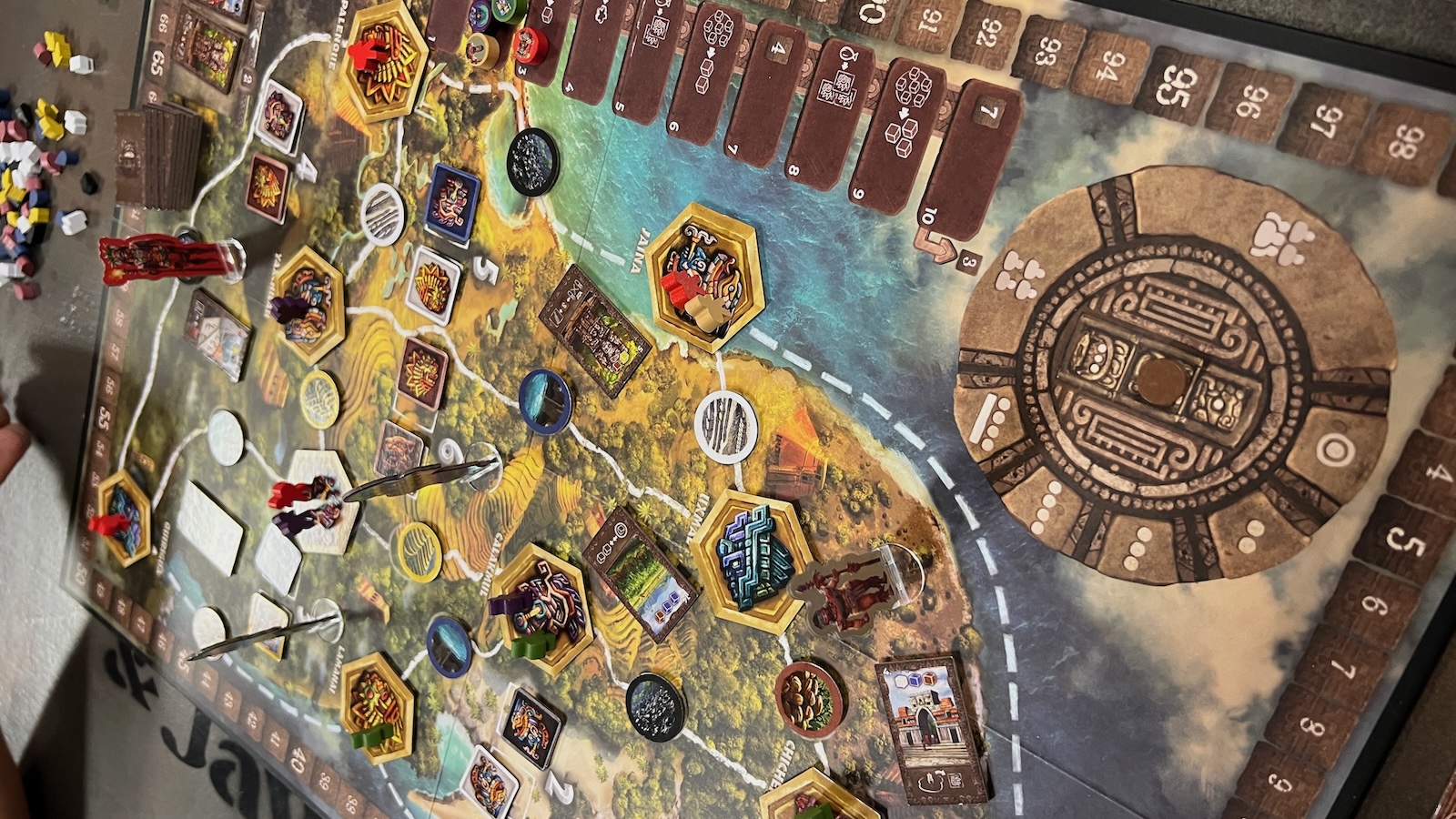
The production of this game was a mixed bag. Everything was made of high quality from the wooden pieces to the cardboard tiles to the cards. The option of making the temples 3D or 2D was a nice touch, depending on the player’s wants, although the tiles would often fall out of the top of the 3D temples. The artwork in this game is very aesthetically pleasing from the color palette to the intricate and period specific illustrations of the Gods. However, there were a few choices that made the game a bit difficult at times. The detailed God illustrations were sometimes hard to distinguish from one another, especially when they were thrown on the different color backgrounds. One needed to look close to distinguish the features between a few. Placing workers on city tiles also blocked the illustrations underneath making it difficult to identify the Gods as well. Another downside was the size of the resources. The miniature wooden tokens, though cool in design, were just too small and unwieldy for some of the clunky hands in my groups of players. A cost cutting measure, maybe, but not my favorite components. Also, the colors and symbols of the resources on the cards did not match the shapes and colors of the resources they were supposed to represent. Only by process of elimination could you determine the matching symbols and resources. The rulebook could have used some paring down and would have benefitted from having the appendix pages of symbols and card/tile descriptions towards the back of the book for easy reference. While I appreciated the player aides and the gameplay summary on the back page of the book, a quick flip back one page would have been more convenient for more references.
While not a component of the main game, I have to note the time and adherence to history this game follows. The creators of the game used numerous archeological, historical, and cultural consultants to make sure the game respected the Mayan culture represented in the game. As an addendum, the game includes a booklet that outlines the history of the cities and regions featured on the board, the historical inspiration for the buildings on the tiles, the different natural resources used by inhabitants of the region, and the different roles of Mayan society. My favorite section of the booklet was learning about the rulers that inspired the player standees and the nuances behind the different Gods worshiped by the Mayan people. As a former history teacher, I am always impressed when games can faithfully integrate themes with respect, and Ahau does it masterfully throughout.
Gameplay Thoughts
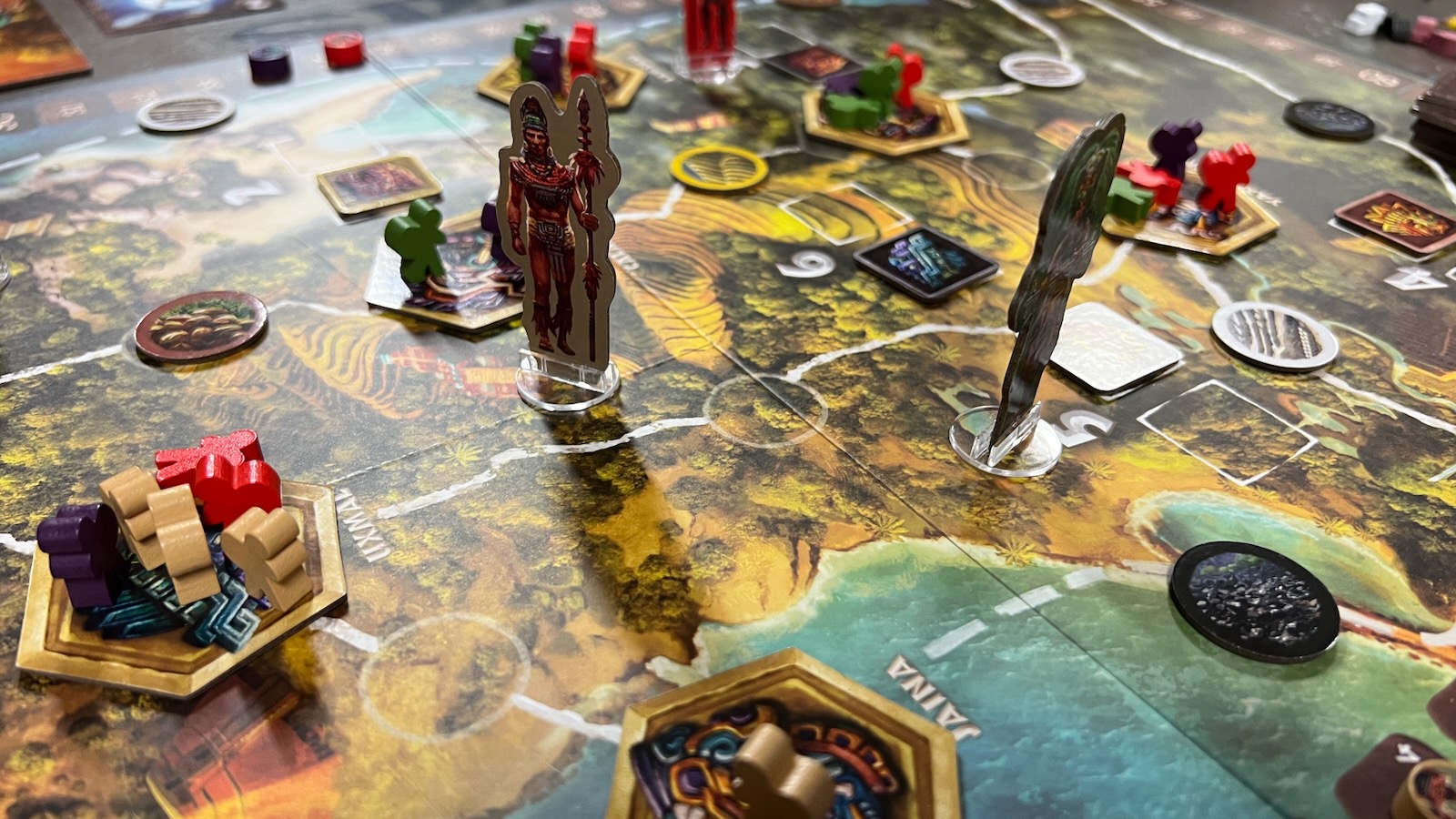
I think there is a good game here. I really want to like this one and I think with some more time on the table, I would learn to love it. However, there are some sticking points that keep it from getting a higher score for me and the people I played with. The first is that there is no real central mechanic to rally around. The game includes resource management, tableau building, engine building, worker placement, and area control/majority, but none of those mechanics shine on their own. Players really need to learn the benefits of each different mechanic to an overall game, in order to develop game strategy and that’s not going to happen in one playthrough. Back to the rulebook, while I appreciate the inclusion of example turns, some of the rules are explained in overlong paragraphs that add some small rules in the middle that can be easily overlooked. Some of the symbols on the cards and tiles are tough to read and decipher, and finding them in the book can be a chore. The game does scale to different player counts, but really shines at 4 and 5 players because conflict and area majority comes into play more organically. Conflicts are a fun element to the game and aren’t overly complicated as some combat systems can be in historical games. Players really have to be strategic about where they place their workers to maximize points. The addition of a shadow player at lower counts can be fun, but that also adds in another component to manage.
Ahau: Rulers of Yucatan
Good
Overall, Ahau: Rulers of Yucatan has a lot of potential. If being taught by a player who knows the rules, new players can pick it quicker than just going to the rulebook to start. The game could use some updated appendices and player aides and will take multiple plays to develop strategy that synthesizes the plethora of mechanics. Ahau is a visually beautiful game that could shine with some editing.
Pros
- Beautiful artwork and historical theming
- Easy combat and action selection system
- Some easy to implement game variants
Cons
- No clear core mechanics making strategizing difficult
- Some design choices make symbols hard to decipher
- Rulebook needs some editing
